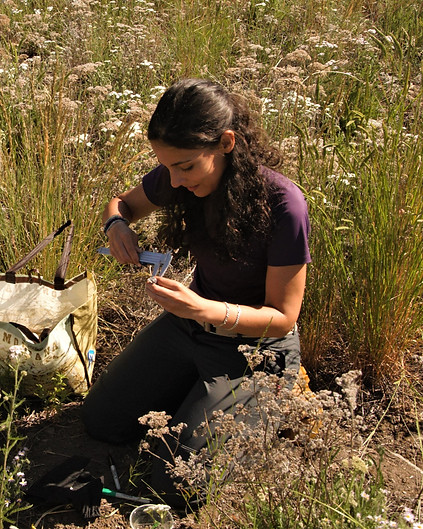top of page

RESEARCH
Physiology of coping
My research entails developing interdisciplinary approaches to investigate physiological and molecular mechanisms underlying organismal responses to environmental challenges.
I aim for my research to be a compendium of studies that together can shape novel approaches for a more integrative and mechanistic understanding of phenotypic plasticity and life-history decisions.
I combine experimental and observational studies in the field and in the lab, merging ecophysiology, behavioral ecology and evolutionary biology. I usually call this combination of approaches and research goals ¨physiology of coping"

My current work focuses on four main research lines:



The deep impact of early life
I am fascinated by the physiological mechanisms by means of which early life experiences “footprint” the organisms for life, determining the function and plasticity of physiological systems, and the capacity to cope.
I study molecular and physiological mediators of these processes, focusing on endocrine regulation, gene expression and epigenetic mechanisms, which are key mediators of developmental effects across vertebrates, and fundamental sources of phenotypic plasticity.

Proxies of coping capacity
and stress resilience
Towards the latter stages of my career, I have focused on finding novel and integrative physiological traits that can be used as proxies of coping abilities in the current context of environmental change. My later work stresses the need to turn research efforts towards estimates of hormone dynamic regulation (e.g. receptor expression and regulation), instead of working with absolute hormone levels only, especially in a conservation context.
Revisiting the ecological interpretation of glucocorticoid hormones
Hormones are good candidates as mediators of coping strategies because they orchestrate physiological and behavioral responses across life stages, determining the overall capacity of an organism to overcome challenges.
Glucocorticoid hormones mediate organismal responses to external and internal, perceived or anticipated challenges. This has traditionally led to them being known as ‘stress hormones’, and widely considered indicators of animal welfare or fitness prospects.
Despite this widespread interpretation, we know very little about the causes of the huge variation that these hormones show at different levels (e.g. within- and among- individuals, and among species). Much of my work has investigated sources and mechanisms of glucocorticoid variation, in the long (e.g. early life adversity) and short (e.g. changes in metabolic demands) term, challenging the traditional interpretation and contributing to a more mechanistic, functional-based approach towards an accurate ecological interpretation of glucocorticoids.

Epigenetic potential as mediator of phenotypic plasticity and dispersal propensity
In an increasingly changing world, organisms need to adjust to environmental fluctuations, and life-history traits should evolve towards maximizing fitness in the face of this variability. Natal dispersal - the movement between the place of birth and first breeding - is a particularly relevant life history trait, and will determine fitness prospects,
population dynamics and species distributions. Despite previous evidence that not all phenotypes are equally likely to disperse, the mechanisms driving variation in natal dispersal remain poorly investigated.
Epigenetic mechanisms – changes in gene expression that do not involve changes in the DNA sequence – enable more rapid and plastic phenotypic responses than are possible via genetic change, and individual genomes may differ in their capacity to respond epigenetically – i.e. epigenetic potential. A high capacity for epigenetically-induced phenotypic plasticity may be a requirement for dispersing individuals to successfully establish in novel environments, and I predict that individuals with higher dispersal propensity will show greater epigenetic potential.
In both my recently finished MSCA-IF project, and my just started MSCA-cofund / DSTrain projcets, I address this question at broad spatial and temporal scales, within and accross bird species. With this research I aim to connecting molecular mechanisms, evolutionary processes, broad scale population dynamics and species distributions.
bottom of page